Imagine a dog that combines the intelligence and trainability of a Labrador Retriever with the loyalty and affectionate nature of a Bernese Mountain Dog. This remarkable blend, known as the bernese mountain dog lab or Labernese, brings together the best of both worlds. With their friendly demeanor, impressive versatility, and gentle disposition, Lab and Bernese Mountain dog mixed dogs are rapidly gaining popularity among dog enthusiasts. Whether you are looking for a loving family companion, a dedicated working dog, or a loyal friend, the Labernese might be the perfect addition to your household.
In this guide, we will delve into the fascinating world of Labernese dogs, exploring their origins, characteristics, and why they are becoming a favorite choice for many. These dogs are not only exceptional family pets but also excel in various roles such as therapy and service dogs, thanks to their unique combination of traits.
Key Takeaways:
-
Versatile Companion: Labernese dogs are ideal for families, singles, and active individuals.
-
Friendly and Gentle: Known for their sociable and affectionate nature, making them excellent with children and other pets.
-
Highly Trainable: Their intelligence and eagerness to please make them easy to train for various roles, including service and therapy work.
-
Robust Health: With proper care, they can lead a healthy and active life, though they are prone to some common health issues.
-
Active Lifestyle: They require regular physical and mental exercise to stay happy and well-behaved.
Read More: The History of Dog Breeding and the Rise of Designer Dogs
1. History and Origin
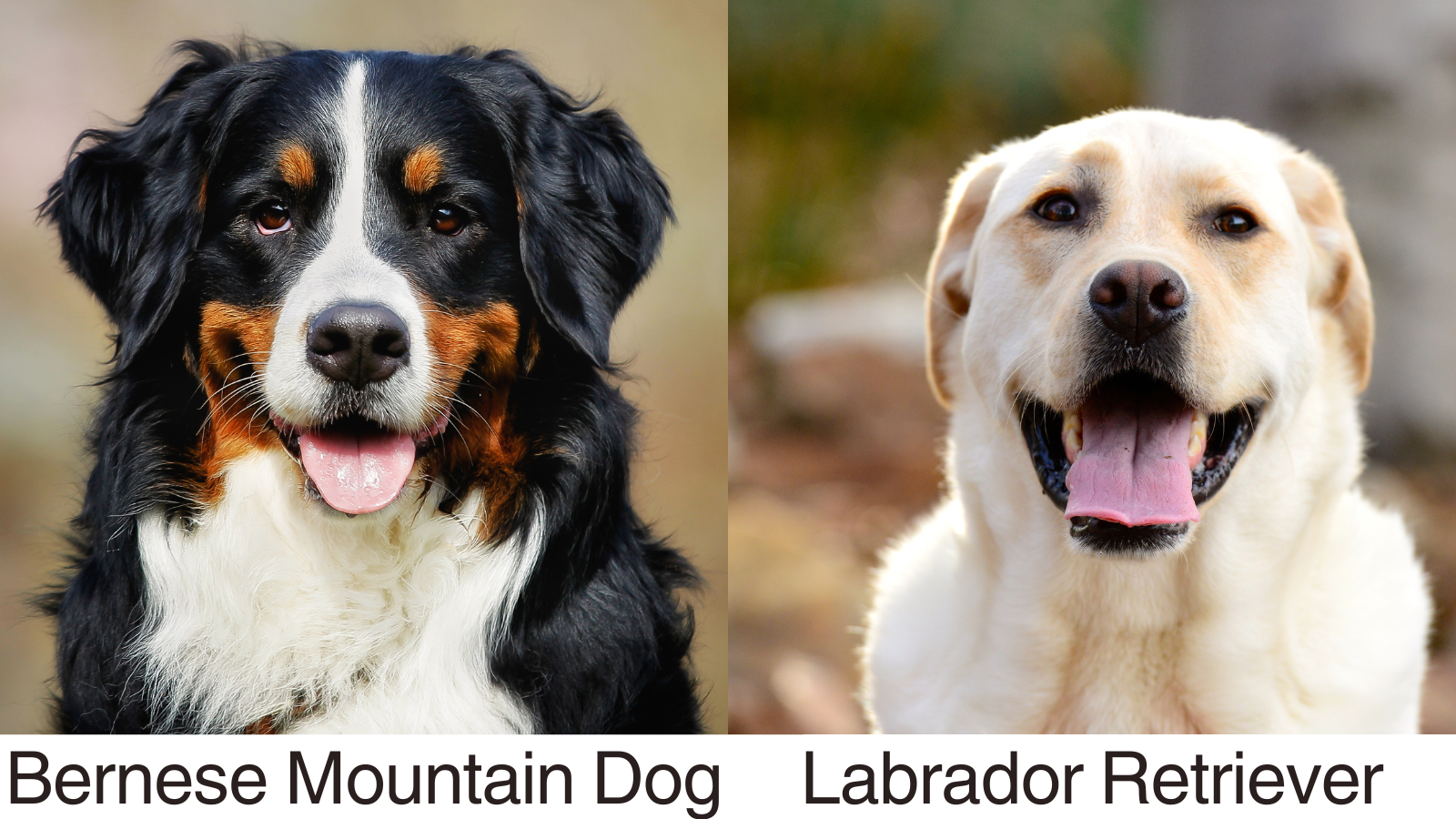
The story of the Labernese begins with its parent breeds, the Labrador Retriever and the Bernese Mountain Dog, both of which have rich histories and have been cherished for generations.
Labrador Retriever
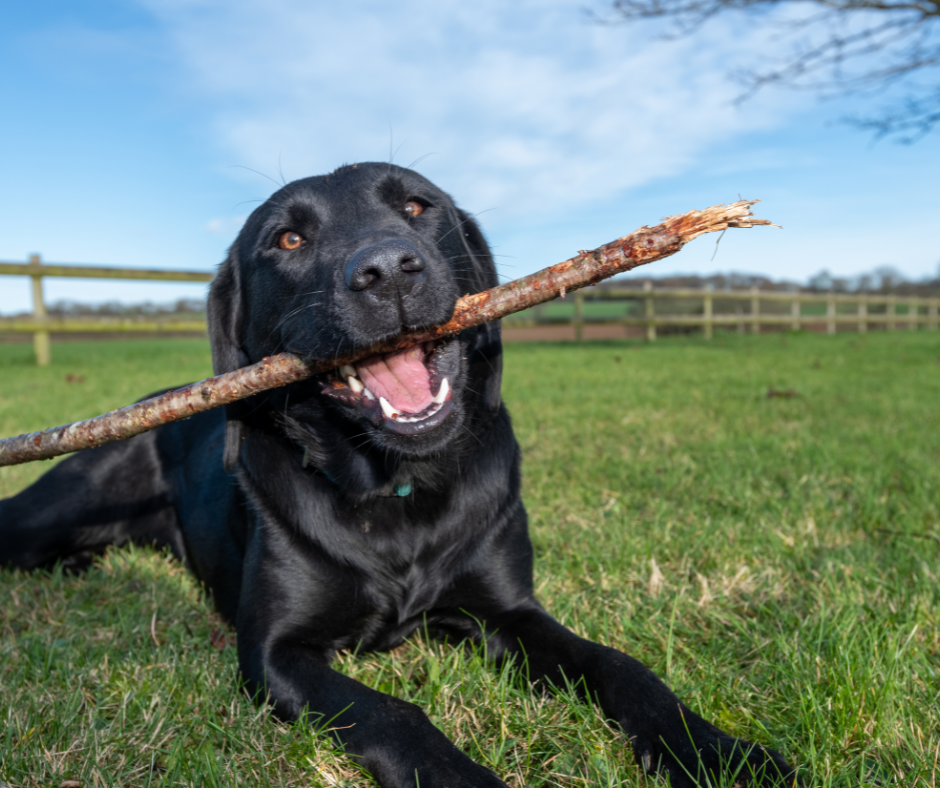
The purebred Labrador Retriever origins can be traced back to the early 19th century in Newfoundland, Canada. Initially known as St. John’s dogs, Labradors were used by fishermen to help retrieve fishing nets and lost fish. British nobles visiting Canada were impressed by their working ability and brought several dogs back to England, where the breed was further refined and standardized. Labradors quickly became popular as hunting dogs and later as family pets due to their friendly nature and trainability.
Bernese Mountain Dog

The Bernese Mountain Dog hails from the Swiss Alps and is one of four types of Swiss Mountain Dogs. Historically, Bernese Mountain Dogs were used by farmers for drafting, herding cattle, and as general farm dogs. They are known for their strength, endurance, and gentle temperament. The breed gained recognition outside Switzerland in the early 20th century and has since become a beloved family companion and working dog.
Labernese as a Distinct Entity
The Labernese emerged as a distinct entity in the early 21st century as part of the growing trend of creating designer breeds by crossing two purebred dogs. Breeders aimed to combine the best qualities of the Labrador and the Bernese Mountain Dog breeds, resulting in a versatile and well-rounded companion. The Labernese has inherited the Labrador’s intelligence and eagerness to please, along with the Bernese’s calm and affectionate nature, making it an excellent choice for families and individuals alike.
The Labernese dog breed is known for its size, loyalty, intelligence, and affectionate nature. Potential owners should consider their energy levels, trainability, genetic health issues, and socialization needs.
2. Understanding Mixed Breed Dogs
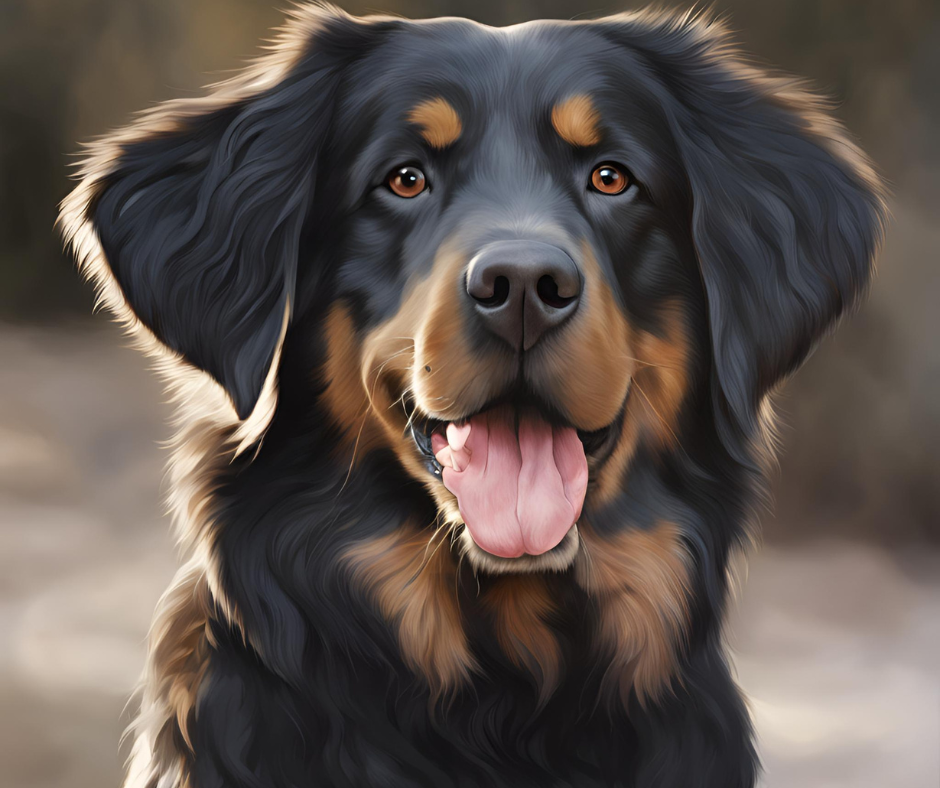
Understanding mixed breed dogs like the Labernese requires a look at their breeding generations, the variability of traits they can inherit, and their path to recognition as a distinct breed.
Generations of Breeding
Mixed breed dogs are typically classified by their generation:
-
F1 Generation: The first generation results from the direct crossing of two purebred dogs, in this case, a Labrador Bernese Mountain Dog, specifically a Labrador Retriever and a Bernese Mountain Dog. F1 Labernese dogs are 50% Labrador and 50% Bernese, inheriting traits directly from their purebred parents.
-
F2 Generation: This generation results from breeding two F1 Labernese dogs. F2 puppies can exhibit more varied traits, with some leaning more towards Labrador characteristics and others more towards Bernese traits.
-
F3 Generation and Beyond: These are bred from F2 Labernese dogs or a mix of further mixed generations. With each subsequent generation, the predictability of traits can diminish unless selective breeding practices are implemented to stabilize certain desired characteristics.
Trait Variability in Mixed Breed Dogs
Trait variability is significant in mixed breeds. Labernese dogs can inherit any mix of physical and behavioral traits from their parent breeds. This includes physical characteristics such as coat color and texture, which can range from the short, dense coat of a Labrador to the longer, thicker coat of a Bernese. Behavioral traits like the Labrador’s high energy and eagerness to please or the Bernese’s calm demeanor and loyalty can also vary. This genetic diversity can make each Labernese unique but also presents challenges in maintaining consistency within the breed.
Path to Recognition
The road to recognition for mixed breeds like the Labernese involves both formal and informal pathways. Informally, recognition can come from widespread popularity and acceptance among the general public and breeders who appreciate the mixed breed’s qualities. Formally, recognition might involve registering with hybrid or designer dog registries, which track the breed’s traits and lineage to ensure consistency and health standards are maintained. Full recognition by major kennel clubs like the AKC is rare for mixed breeds and involves a rigorous process that may require the establishment of a breed club, a detailed breed standard, and a considerable population size. Labernese dogs are often larger than purebred Labrador Retrievers and are known for their friendly nature, devotion, intelligence, and specific grooming needs.
3. Physical Characteristics
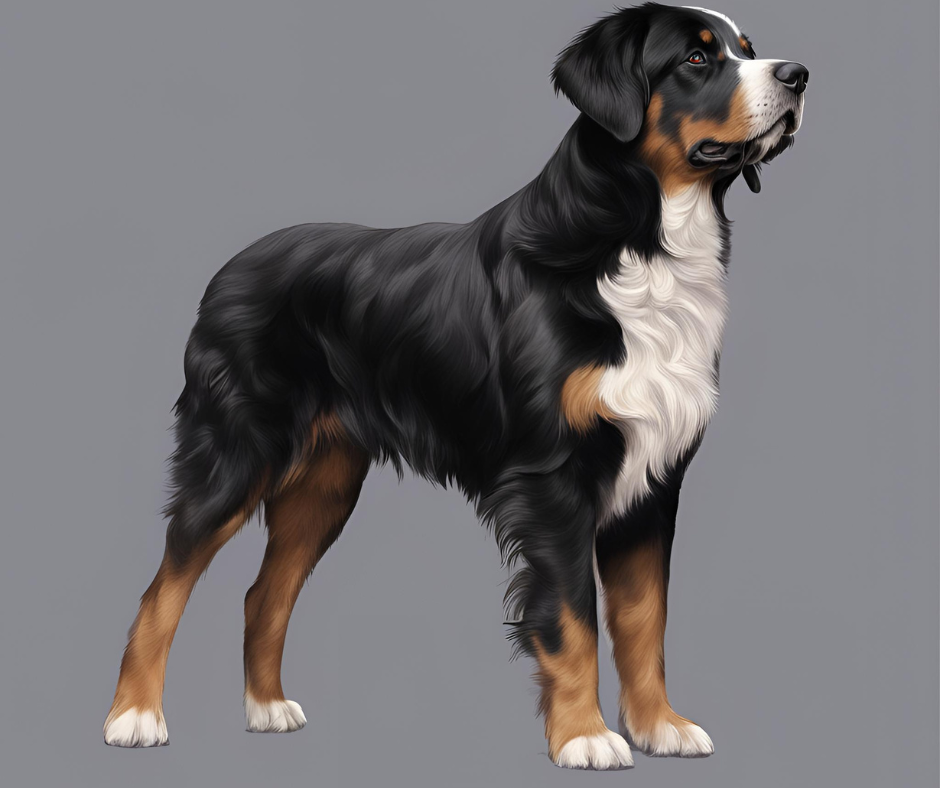
Labernese dogs inherit a combination of physical traits from their Labrador Retriever and Bernese Mountain Dog parents, resulting in a striking and robust appearance. Typically weighing between 65 and 110 pounds and standing about 23 to 27 inches tall at the shoulder, Labernese dogs are classified as large-sized dogs.
Appearance
The Labernese’s coat can vary significantly due to the genetic influence of its parent breeds. It is usually dense and can be short to medium in length, providing excellent protection against the elements. Common coat colors include black, yellow, and chocolate, as well as combinations with white, often resembling the Bernese’s distinctive tricolor pattern (black, white, and rust). This variety in coat appearance adds to their unique charm, making each Labernese distinct.
Eyes and Expression
Labernese dogs often have expressive, warm brown eyes that reflect their gentle and intelligent nature. Their eyes are one of their most endearing features, exuding the Labrador’s friendly demeanor and the Bernese’s calm, affectionate personality. Their facial expressions are usually soft and inviting, further emphasizing their approachable nature.
Build
These dogs possess a sturdy and muscular build, combining the athleticism of the Labrador with the Bernese’s robust frame. They have a broad chest, strong legs, and a well-proportioned body that signals their capability for various physical tasks. Their tails are typically long and can be either straight or slightly curved, often wagging enthusiastically, showcasing their friendly disposition.
Overall Health and Grooming
The Labernese’s coat, while beautiful, does require regular maintenance. Weekly brushing helps manage shedding and keeps their coat healthy. During shedding seasons, more frequent brushing may be necessary. Bathing should be done as needed, typically every few months, to keep their coat clean and free from dirt and parasites. Additionally, regular checks and cleaning of their ears, trimming their nails, and brushing their teeth are essential aspects of their grooming routine to maintain overall health. Crate training can also be beneficial for managing separation anxiety and ensuring the dog feels safe and secure, especially in apartment living.
4. Temperament and Personality
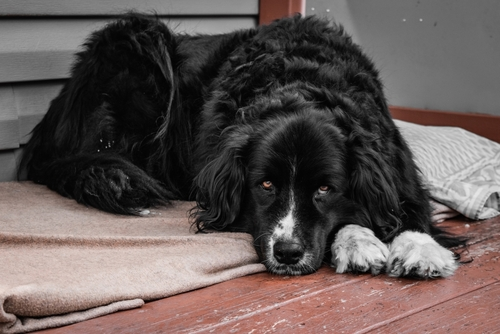
Labernese dogs are celebrated for their well-balanced temperament, combining the best qualities from both the Labrador Retriever and the Bernese Mountain Dog. Known for their intelligence, loyalty, and gentle nature, Labernese dogs excel as family pets, companions, and working dogs.
Friendly and Sociable
Labernese dogs are exceptionally friendly and sociable. They thrive on human interaction and form strong bonds with their families. Their gentle disposition makes them particularly good with children, as they are known to be patient and tolerant. This makes them an ideal choice for households with young kids. Their sociability extends to other pets as well, often getting along well with other dogs and animals in the household.
Intelligent and Trainable
Both the Labrador and Bernese Mountain Dog are renowned for their intelligence and eagerness to please, traits that the Labernese inherits fully. This makes them highly trainable and responsive to obedience training. They excel in various roles, including service and therapy work, due to their quick learning ability and willingness to follow commands. Labernese dogs are known to excel in obedience classes, agility training, and even advanced tricks.
Calm and Affectionate
Labernese dogs are calm and affectionate, often seeking out their owners for cuddles and companionship. They are known to be gentle giants, with a laid-back attitude that makes them perfect for both active families and individuals looking for a loving companion. Their affectionate nature means they often enjoy sitting by their owner’s side, providing comfort and emotional support. They are known to be particularly good at sensing their owner’s mood and providing the appropriate level of comfort.
Energetic and Playful
While they have a calm side, Labernese dogs also possess a playful and energetic nature. They enjoy outdoor activities such as hiking, running, and playing fetch. Regular exercise is essential to keep them healthy and happy, preventing boredom and associated behavioral issues. Their playful nature makes them great companions for children and active adults. They are also known to enjoy swimming, which can be a fun and excellent way for them to get exercise.
Loyal and Protective
Labernese dogs are incredibly loyal to their families and can be protective when necessary. They are typically not aggressive but their size and presence can be a deterrent to potential threats. Their protective instincts make them excellent watchdogs, alerting their owners to anything unusual. They are known to be very attentive and will often position themselves between their family and any perceived danger, showing their protective nature.
Socialization Needs
Early socialization is crucial for Labernese dogs to ensure they grow up to be well-rounded and confident. Exposure to different environments, people, and other animals during puppyhood helps them develop into friendly and adaptable adults. Socialization helps mitigate any shyness or overprotectiveness, ensuring they are comfortable in various situations. Visiting a dog park can be an excellent part of this socialization process, allowing them to interact with other dogs and enjoy the company of fellow canines.
In summary, the Labernese is a versatile and well-rounded breed that excels in various roles, from family pet to working dog. Their friendly and intelligent nature, combined with their calm and affectionate demeanor, makes them a beloved companion for many dog lovers. Whether playing in the yard, accompanying on outdoor adventures, or providing emotional support, the Labernese brings joy and loyalty to their families, making them a cherished member of any household.
5. Health and Lifespan
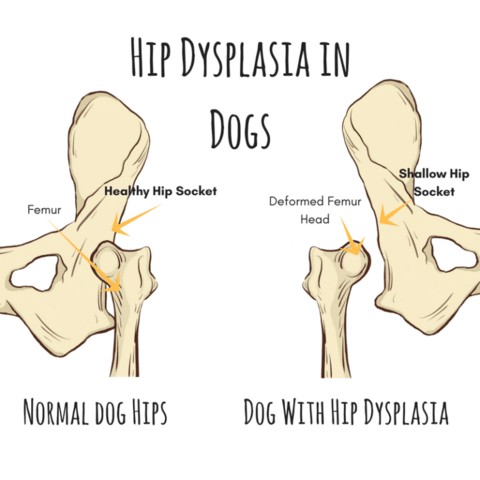
Labernese dogs are generally healthy, benefiting from the robust genetics of both the Labrador Retriever and Bernese Mountain Dog. However, like all breeds, they are prone to certain health conditions that prospective owners should be aware of. A well-cared-for Labernese typically has a lifespan of 10 to 12 years.
Common Health Issues:
-
Hip and Elbow Dysplasia: This is a common issue in larger breeds, including Labernese dogs. It involves an abnormal formation of the hip or elbow joints, which can lead to arthritis or lameness. Regular check-ups and maintaining a healthy weight can help manage and prevent this condition.
-
Bloat (Gastric Dilatation-Volvulus): This life-threatening condition can affect deep-chested breeds like the Labernese. It involves the stomach twisting and filling with gas. Immediate veterinary attention is required if symptoms like excessive drooling, a distended abdomen, or unproductive vomiting are observed.
-
Cancer: Unfortunately, Bernese Mountain Dogs are known for a higher incidence of cancer, which can also affect Labernese dogs. Regular vet visits and early detection are crucial for managing this risk.
-
Ear Infections: Due to their floppy ears, Labernese dogs can be prone to ear infections. Regular ear cleaning and monitoring for signs of infection, such as redness, odor, or excessive scratching, are important.
-
Heart Diseases: Conditions like cardiomyopathy and heart valve problems can occur in this breed. Regular veterinary check-ups can help catch these issues early.
Labrador Retrievers, which are part of the Labernese mix, can pass on genetic diseases such as dysplasia and eye diseases. Thorough veterinary and DNA checks are essential when buying a Labernese puppy to ensure peace of mind regarding potential health issues.
Care and Prevention
Proper care is essential to minimize the risk of these health issues:
-
Regular Exercise: Keeping your Labernese active helps manage their weight, reducing the stress on their joints and lowering the risk of heart disease.
-
Balanced Diet: A nutritious, balanced diet tailored to their age, size, and activity level is crucial for maintaining overall health. Portion control is important to prevent obesity.
-
Routine Veterinary Visits: Regular check-ups can catch health issues before they become severe. This includes vaccinations, parasite prevention, and health screenings.
-
Dental Care: Regular brushing of teeth helps prevent dental diseases, which can impact their overall health.
6. Training and Exercise Needs
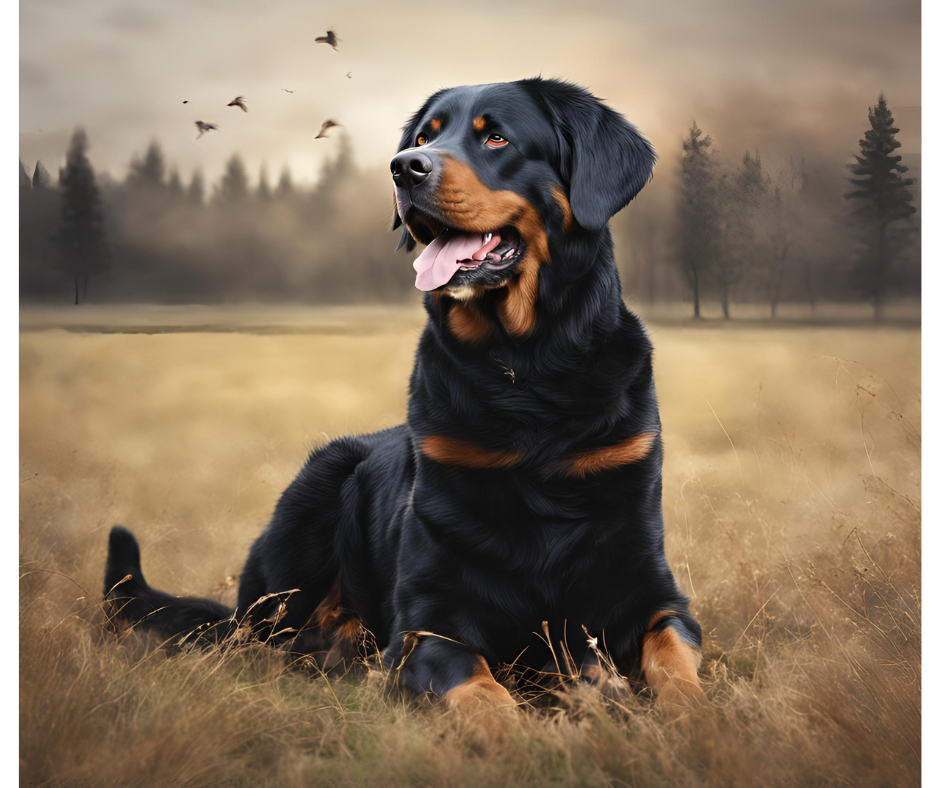
Labernese dogs are not only intelligent but also highly eager to please, making them relatively easy to train. Their training and exercise needs should be met to ensure they remain happy, healthy, and well-behaved.
Training
-
Early Socialization: Exposing your Labernese dog to a variety of people, places, and situations early on can help them develop into a well-rounded dog. Puppy socialization classes are a great start.
-
Obedience Training: Basic commands like sit, stay, come, and heel are easily grasped by Labernese dogs due to their keen intelligence. Positive reinforcement techniques, such as treats, praise, and play, work best.
-
Advanced Training: Given their aptitude, many Labernese dogs excel in advanced training, including agility, advanced obedience, and even specialized roles like therapy and service dog training. Consistency and patience are key in training sessions.
Read More: Dog Training 101
Exercise Needs
-
Physical Activity: Labernese dogs require regular physical exercise to keep them healthy and prevent boredom. They thrive on activities like long walks, jogging, hiking, and playing fetch. Aim for at least an hour of vigorous exercise daily.
-
Mental Stimulation: Providing mental stimulation is equally important. Puzzle toys, hide-and-seek games, and learning new tricks can keep their mind active and engaged. Interactive toys and games that challenge their problem-solving skills are beneficial.
-
Outdoor Activities: Labernese dogs enjoy outdoor activities and often have a natural affinity for water, making swimming an excellent form of exercise. They also enjoy exploring new environments, so varied walking routes and outdoor adventures can be very stimulating.
Behavioral Considerations
-
Boredom Prevention: Labernese dogs can become bored and potentially destructive if not given enough exercise and mental stimulation. Ensuring they have enough activities to keep them occupied is crucial.
-
Positive Reinforcement: Using positive reinforcement techniques during training helps build a strong bond between the dog and owner, encouraging good behavior and learning.
In summary, meeting the training and exercise needs of a Labernese is essential for their overall well-being. Their intelligence and eagerness to please make them highly trainable, and their energy levels require regular physical and mental stimulation. Providing a balanced combination of these elements ensures a happy, healthy, and well-adjusted Labernese.
7. Suitability as Family Pets
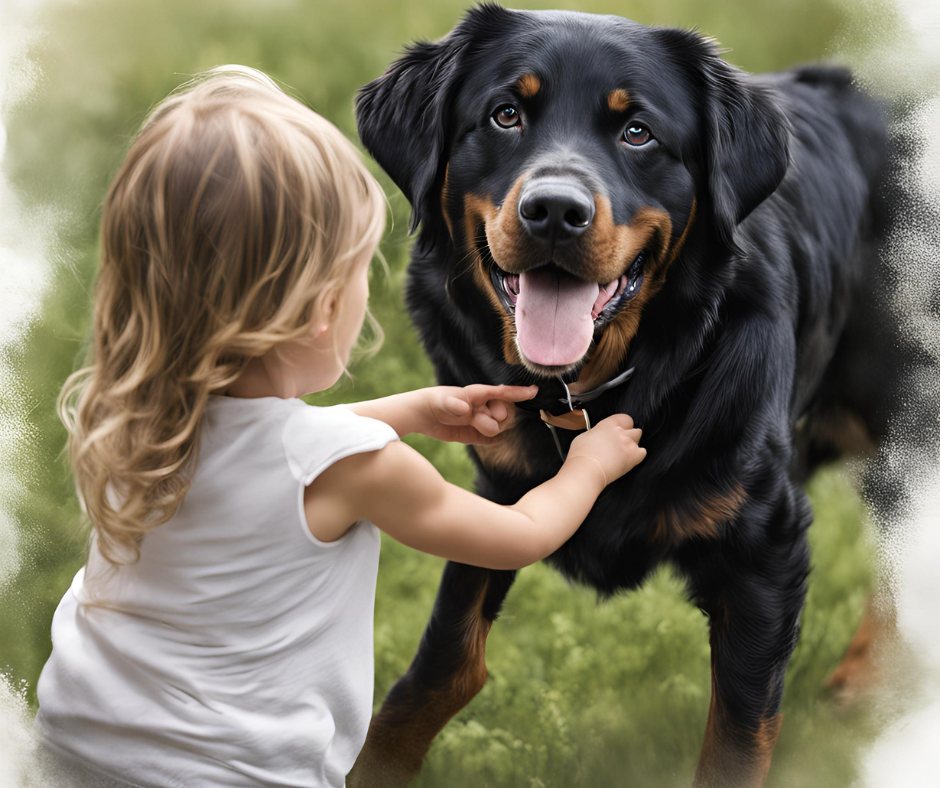
Labernese dogs are widely recognized for their suitability as family pets, thanks to their friendly, loyal, and adaptable nature. They thrive in family environments where they can be active participants in daily activities and form strong bonds with all family members.
Interaction with Children
Labernese dogs are known for their gentle and patient demeanor, making them excellent companions for children. They are tolerant of the energetic and sometimes unpredictable nature of kids. Their large size and sturdy build mean they can handle rough-and-tumble play without getting easily hurt. However, as with any breed, it is important to supervise interactions between dogs and young children to ensure safety for both parties. Teaching children how to properly interact with and respect dogs is also crucial. Labernese puppies are particularly suitable for families with young children due to their friendly and adaptable nature.
Compatibility with Other Pets

Labernese dogs generally get along well with other pets, including other dogs and cats. Their friendly and sociable nature makes them adaptable to multi-pet households. Early socialization is key to ensuring they develop positive relationships with other animals. Introducing a Labernese to other pets gradually and in a controlled manner helps build a harmonious environment.
Adaptability to Different Living Situations
While Labernese dogs are adaptable, they do best in homes with enough space to accommodate their size and exercise needs. They can adapt to apartment living if given sufficient exercise and mental stimulation, but they thrive in homes with large yards or access to outdoor spaces. Their versatile nature allows them to adjust to various living situations as long as their physical and emotional needs are met.
Emotional Support and Companionship
Labernese dogs excel in providing emotional support and companionship. Their affectionate nature means they often seek out their owners for cuddles and companionship. They are sensitive to their owners’ emotions and can offer comfort during stressful times. This makes them ideal pets for individuals or families seeking a loyal and loving companion.
Training and Activity Needs
The active and intelligent nature of the Labernese means they require regular physical and mental stimulation. Families who enjoy outdoor activities such as hiking, running, or playing fetch will find a perfect partner in a Labernese. Their eagerness to please and high trainability also make them suitable for families willing to invest time in training and interactive play.
8. Role as Working Dogs
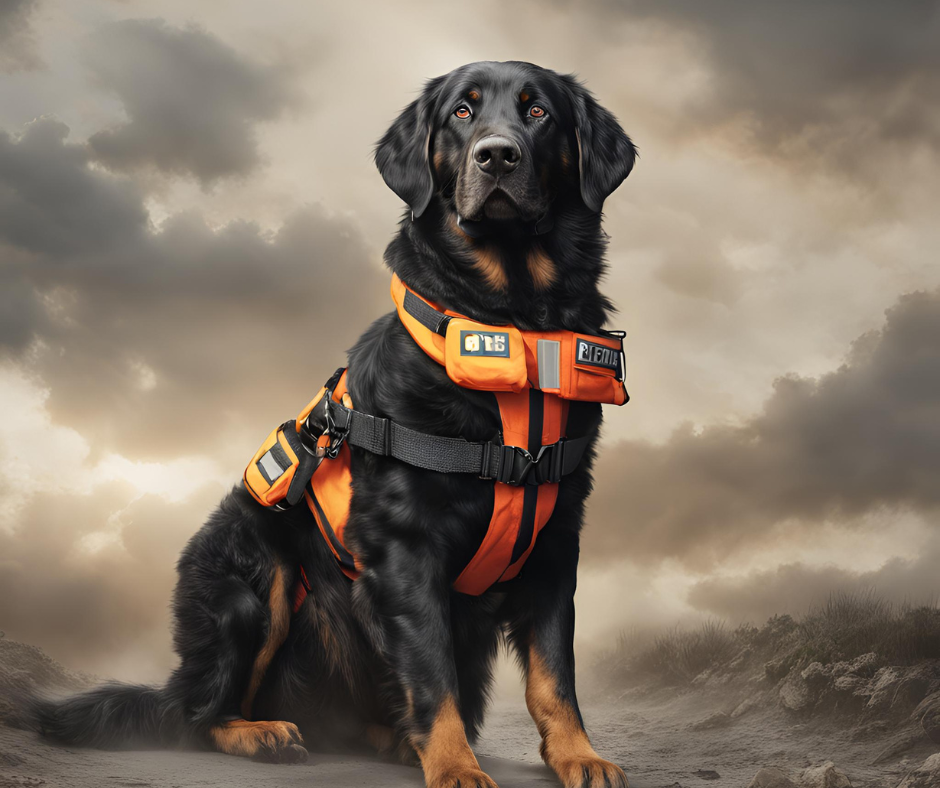
Labernese dogs have established a reputation for excelling in various working roles, thanks to their intelligence, trainability, and versatile nature. Their ability to adapt and perform different tasks makes them valuable in numerous working capacities.
Service and Assistance Dogs
Labernese dogs are commonly trained as service and assistance dogs. Their calm demeanor, combined with their intelligence and trainability, makes them ideal for helping individuals with disabilities. They can be trained to perform tasks such as guiding the visually impaired, assisting with mobility issues, retrieving items, and providing emotional support. Their gentle and patient nature also makes them excellent therapy dogs, offering comfort and companionship to those in hospitals, nursing homes, and other care facilities.
Search and Rescue (SAR) Roles
The physical robustness and keen sense of smell of the Labernese make them excellent candidates for search and rescue operations. They are often used in wilderness search and rescue missions, disaster response, and locating missing persons. Their endurance and ability to work in challenging conditions are highly valued in SAR roles.
Law Enforcement and Detection Work
While not as common in law enforcement as some other breeds, Labernese dogs can be trained for detection roles. Their strong sense of smell and trainability make them suitable for tasks such as drug detection, bomb detection, and other scent-based work. They can also be used in cadaver detection due to their ability to focus and follow scent trails.
Therapy and Emotional Support Roles
Labernese dogs excel in therapy and emotional support roles due to their gentle and affectionate nature. They provide comfort and companionship to individuals in schools, hospitals, and therapy centers. Their presence can have a calming effect, reducing stress and anxiety in various settings. They are particularly effective in helping individuals with mental health conditions, providing consistent emotional support.
Agricultural and Farm Work
Due to their strong work ethic and physical strength, Labernese dogs can also be valuable on farms. They can assist with herding livestock, guarding property, and performing other farm-related tasks. Their versatility and ability to learn new tasks make them suitable for various roles in agricultural settings.
In summary, the Labernese is a versatile and hardworking breed that excels in numerous roles, from service and therapy work to search and rescue operations. Their intelligence, trainability, and gentle nature make them invaluable in many working capacities. Whether providing assistance to individuals with disabilities, participating in search and rescue missions, or offering comfort as therapy dogs, Labernese dogs demonstrate exceptional abilities and dedication in their roles.
9. Care and Maintenance
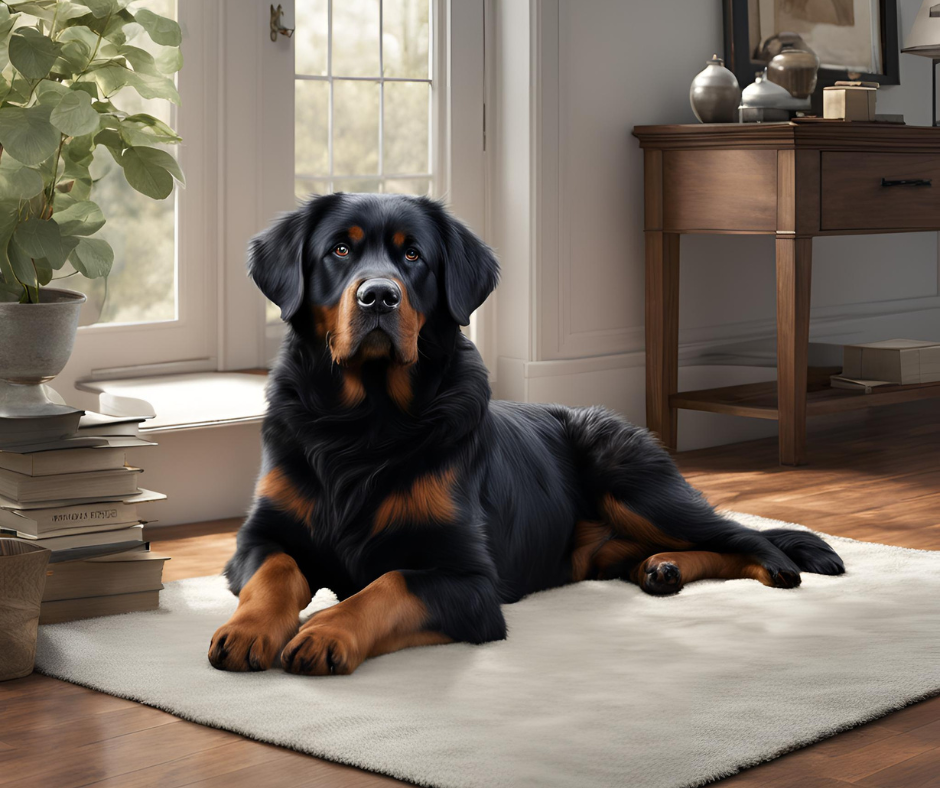
Maintaining the health and happiness of a Labernese requires a commitment to regular care, which includes grooming, dietary management, and overall wellness routines. Their robust nature and active lifestyle mean that they benefit greatly from structured care practices.
Grooming Needs
Labernese dogs have a dense, medium-length coat that requires regular grooming to keep it in good condition. Their grooming needs include:
-
Brushing: To manage shedding and prevent matting, brush your Labernese at least two to three times a week. During shedding seasons (spring and fall), more frequent brushing may be necessary.
-
Bathing: Bathe your Labernese as needed, typically every couple of months, or whenever they get particularly dirty. Use a gentle dog shampoo to maintain the natural oils in their coat.
-
Ear Cleaning: Due to their floppy ears, Labernese dogs are prone to ear infections. Regularly check their ears for signs of redness, odor, or excessive wax buildup, and clean them with a vet-approved ear cleaner.
-
Nail Trimming: Trim your Labernese’s nails every 3-4 weeks or as needed to prevent overgrowth and splitting. If you can hear their nails clicking on the floor, it’s time for a trim.
-
Dental Care: Brush your dog’s teeth several times a week to prevent tartar buildup and dental diseases. Dental chews and regular vet dental check-ups also help maintain oral health.
Dietary Considerations
Feeding your Labernese a balanced diet is crucial for their overall health:
-
High-Quality Dog Food: Choose a high-quality dog food that meets the nutritional standards set by the Association of American Feed Control Officials (AAFCO). Look for foods that list meat as the first ingredient and avoid those with excessive fillers.
-
Portion Control: Monitor your dog’s weight and adjust food portions to maintain a healthy weight. Obesity can exacerbate joint issues and other health problems.
-
Feeding Schedule: Divide their daily food intake into two meals to prevent bloat, a condition to which deep-chested breeds like the Labernese are prone.
-
Fresh Water: Ensure your Labernese has access to fresh water at all times, especially during and after exercise.
Health Monitoring
Regular veterinary visits are essential for maintaining the health of your Labernese:
-
Routine Check-ups: Schedule annual or bi-annual check-ups to monitor your dog’s overall health and catch any potential issues early.
-
Vaccinations: Keep up with your dog’s vaccination schedule to protect them from common diseases.
-
Parasite Prevention: Use preventive treatments for fleas, ticks, and heartworms as recommended by your veterinarian.
-
Health Screenings: Regularly screen for common health issues in Labernese dogs, such as hip dysplasia, elbow dysplasia, and heart conditions.
10. Adoption and Buying Advice
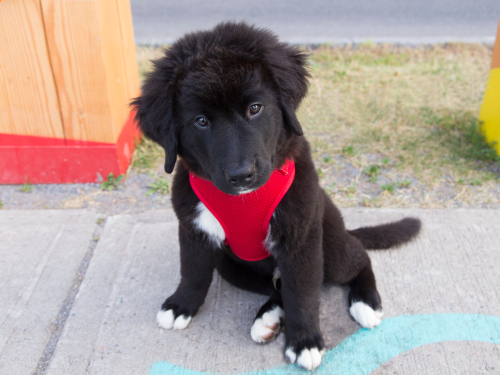
When considering adding a Labernese to your family, it is important to decide whether to adopt from a rescue or purchase from a reputable breeder. Each option has its own merits and considerations.
Adopting a Labernese
Adopting a Labernese can be a rewarding experience, providing a home to a dog in need. Many rescues and shelters have Labernese or similar mixes available for adoption. Adoption has several benefits:
Cost-Effective: Adopting a dog usually costs less than purchasing from a breeder and often includes vaccinations, microchipping, and spaying or neutering.
Saving a Life: By adopting, you provide a second chance to a dog in need, helping reduce the number of homeless pets.
Adult Dogs: Many dogs available for adoption are adults, which means their temperament and health are already established, making it easier to find a good match for your household.
Buying from a Breeder
If you prefer a puppy and want to raise and train it from a young age, purchasing a Labernese from a reputable breeder might be the best option. Here are some tips for finding a responsible breeder:
Research: Conduct thorough research to identify breeders who have a good reputation and prioritize the health and temperament of their dogs. Look for breeders who are transparent about their breeding practices and welcome questions.
Health Screenings: Ensure the breeder conducts necessary health screenings on their breeding dogs to avoid common hereditary health issues. They should provide health clearances for both parent breeds.
Visiting the Breeder: Visit the breeder’s facility to see how the puppies are raised and to meet the parent dogs. This helps you gauge the environment and the dogs’ temperament.
Ask Questions: A reputable breeder will ask you questions about your lifestyle and experience to ensure their puppies go to suitable homes. They should also provide support and guidance after you take your puppy home.
What to Look for in a Labernese Puppy or Adult
Health: Look for signs of good health, such as clear eyes, a shiny coat, and good energy levels. Avoid puppies or adults that appear lethargic or have visible health issues.
Temperament: Choose a puppy or adult with a temperament that matches your family’s lifestyle. Labernese dogs should be friendly, confident, and sociable.
Documentation: Ensure you receive all necessary documentation, including vaccination records, health clearances, and, if applicable, pedigree information.
By carefully considering your options and choosing a reputable source, you can find a healthy and well-adjusted Labernese that will become a cherished member of your family. Whether adopting or buying, the key is to make an informed decision that aligns with your family’s needs and lifestyle.
11. Conclusion
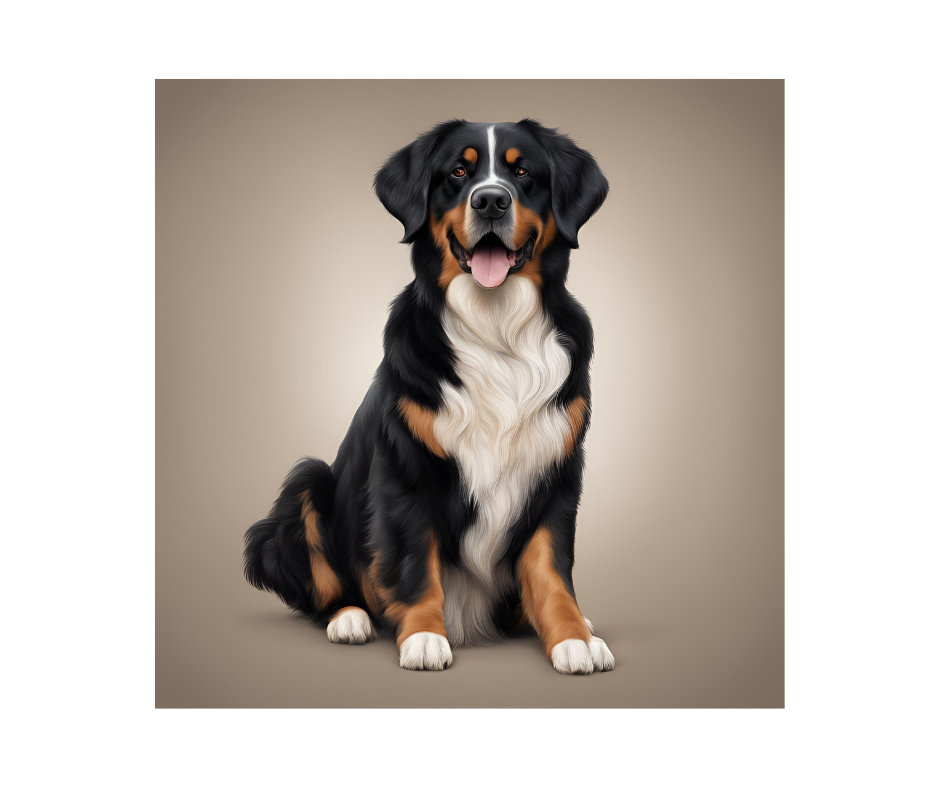
The Labernese is a versatile and well-rounded breed that excels in various roles, from family pet to working dog. Their friendly and intelligent nature, combined with their calm and affectionate demeanor, makes them a beloved companion for many dog lovers. Whether playing in the yard, accompanying on outdoor adventures, or providing emotional support, the Labernese brings joy and loyalty to their families, making them a cherished member of any household. Pet parents considering adopting or buying a Labernese should take into account their need for regular exercise and mental stimulation.
Summary of Key Points:
-
Temperament: Labernese dogs are friendly, intelligent, and loyal, making them excellent companions for families and individuals alike.
-
Versatility: They excel in various roles, including service, therapy, search and rescue, and detection work, thanks to their trainability and keen sense of smell.
-
Health and Care: Regular veterinary visits, a balanced diet, and proper grooming are essential for maintaining their health and happiness.
-
Training and Exercise: They require regular physical and mental stimulation to stay healthy and well-behaved. Early socialization and consistent training are key to their development.
-
Adoption and Purchasing: Whether adopting from a rescue or purchasing from a breeder, it’s important to choose a reputable source to ensure the health and temperament of your Labernese.
Encouragement for Responsible Pet Ownership: Owning a Labernese comes with responsibilities that should not be taken lightly. Providing a loving and structured environment, meeting their exercise and mental stimulation needs, and ensuring regular health check-ups are crucial for a fulfilling and rewarding relationship with your Labernese. By committing to responsible pet ownership, you can enjoy many happy years with this loyal and affectionate breed.
Resources and Community: For additional support and information, consider joining Labernese-specific communities and online forums. These platforms offer valuable advice, share experiences, and provide recommendations for addressing breed-specific issues. Engaging with other Labernese owners can enhance your understanding of the breed and provide a network of support.
FAQs about Labernese Dogs
1. What is a Labernese? A Labernese is a hybrid dog breed resulting from the cross between a Labrador Retriever and a Bernese Mountain Dog. They inherit the best traits of both parent breeds, making them friendly, intelligent, and loyal companions.
2. How big do Labernese dogs get? Labernese dogs typically weigh between 65 and 110 pounds and stand about 23 to 27 inches tall at the shoulder, making them a large-sized breed.
3. What are the exercise needs of a Labernese? Labernese dogs require at least an hour of vigorous exercise daily. They enjoy activities such as walking, running, hiking, and swimming. Mental stimulation is also important to keep them engaged and prevent boredom.
4. Are Labernese dogs good with children? Yes, Labernese dogs are known for their gentle and patient demeanor, making them excellent companions for children. However, as with any breed, supervision is recommended during interactions between dogs and young children.
5. What are the common health issues in Labernese dogs? Common health issues include hip and elbow dysplasia, bloat (gastric dilatation-volvulus), cancer, ear infections, and heart diseases. Regular veterinary check-ups and preventive care are essential to manage these risks.
6. How often should I groom my Labernese? Labernese dogs should be brushed at least two to three times a week to manage shedding and prevent matting. Regular baths, ear cleaning, nail trimming, and dental care are also important parts of their grooming routine.
7. What is the lifespan of a Labernese? Labernese dogs typically have a lifespan of 10 to 12 years. Proper care, a balanced diet, and regular exercise can help ensure a long and healthy life.

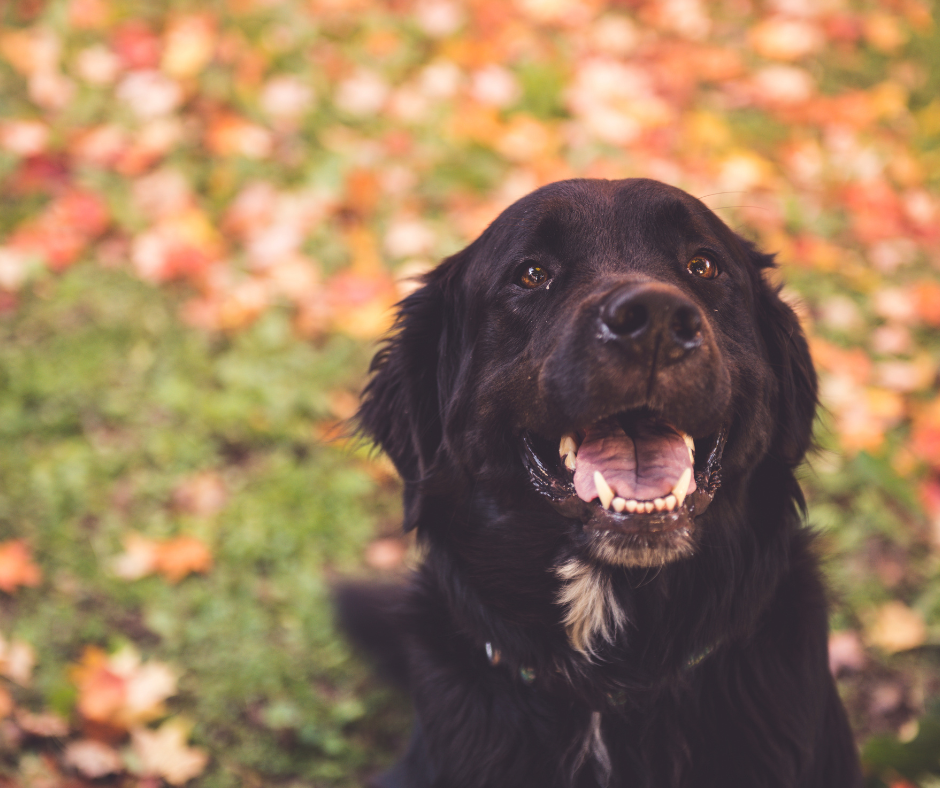

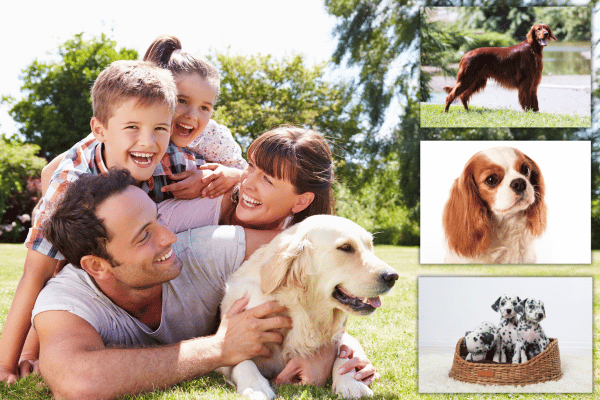
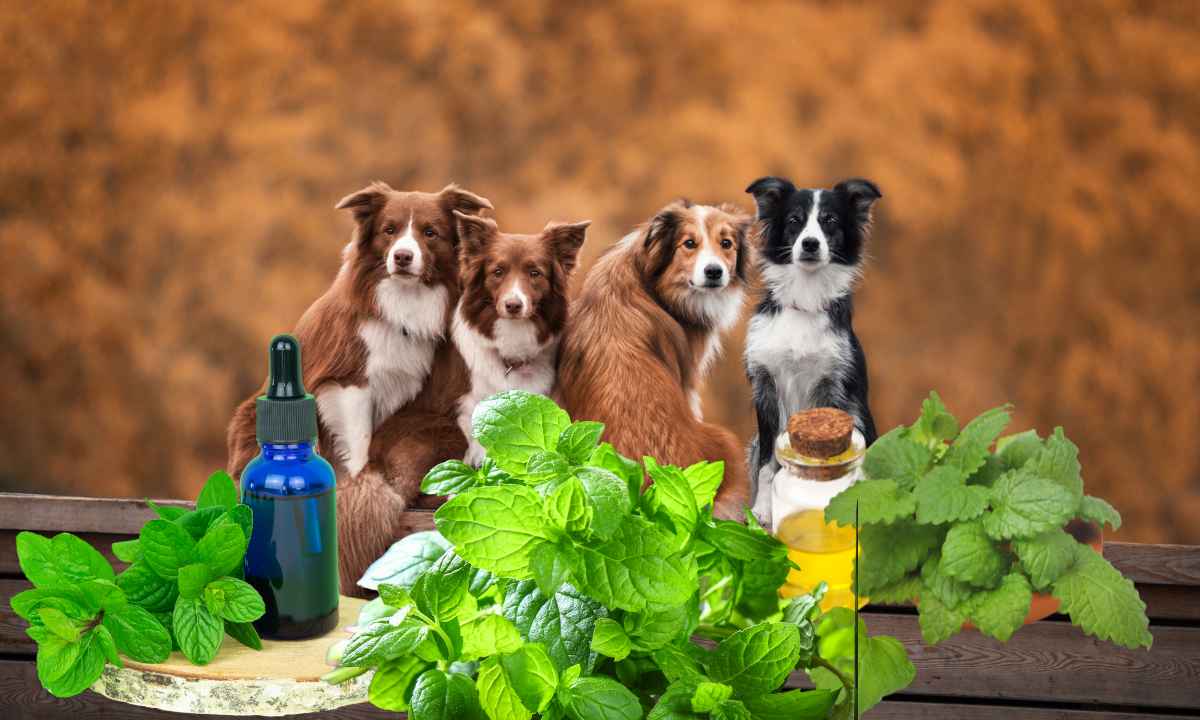

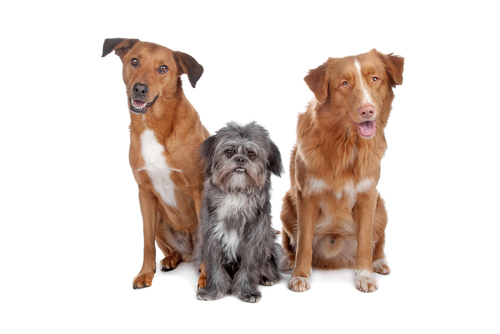
Get involved!
Comments